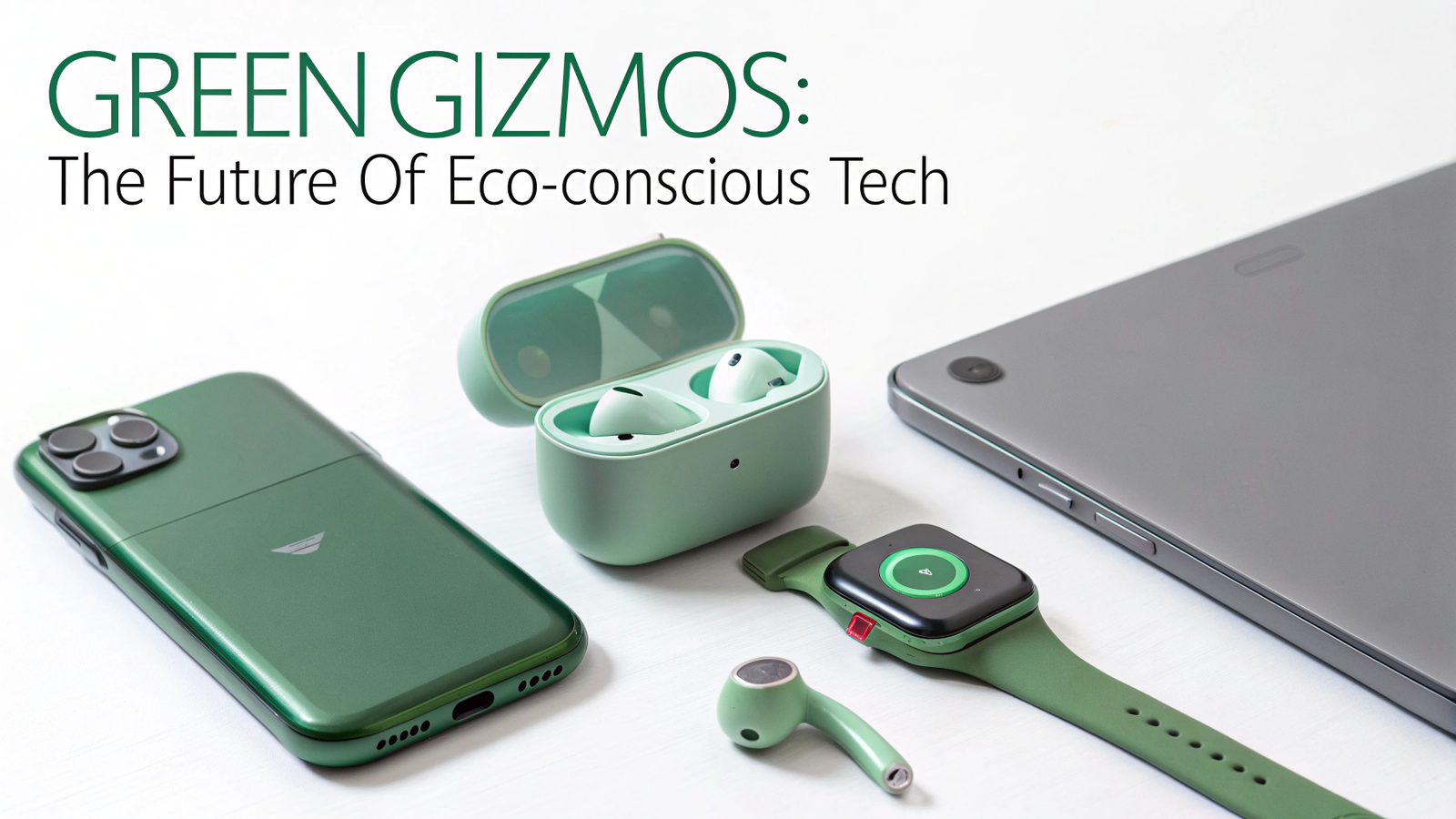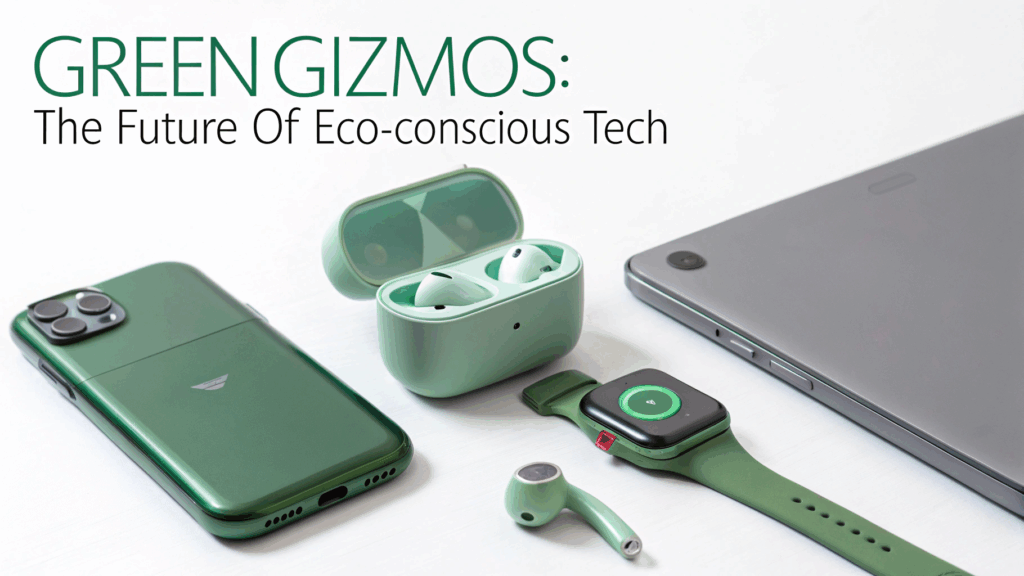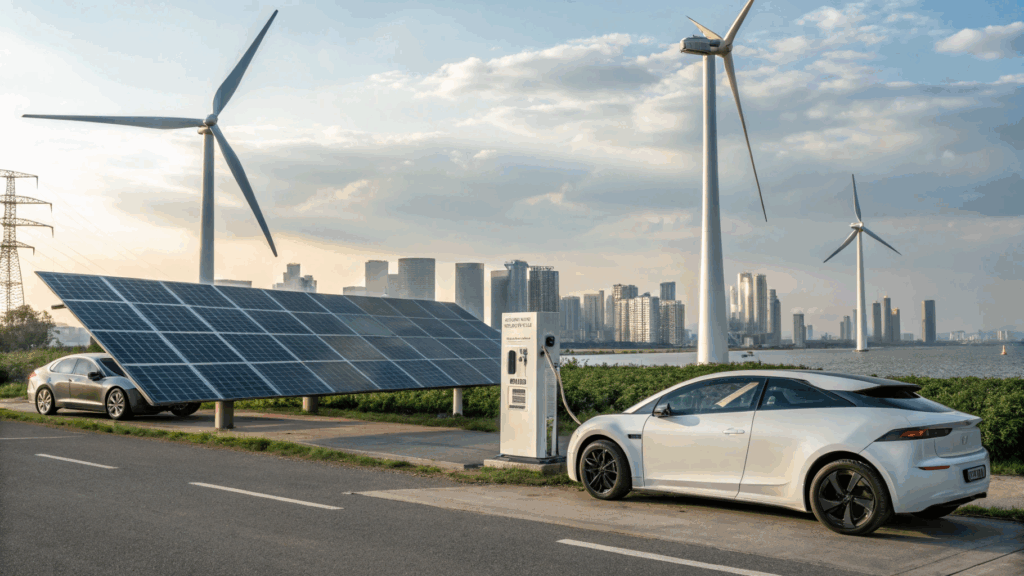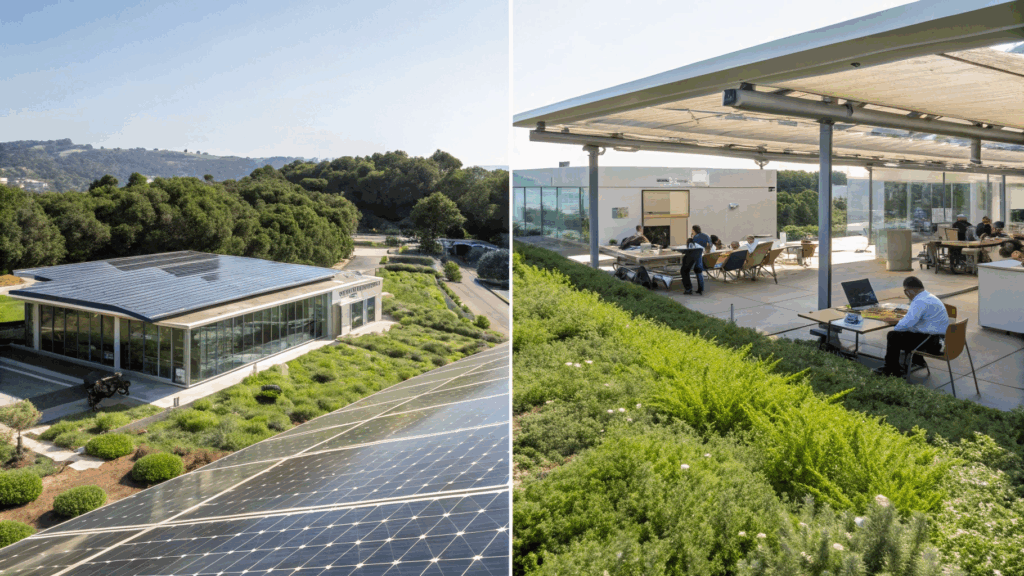
Green Gizmos: The Future of Eco-Conscious Tech
Introduction
As the digital age surges forward, the allure of technological innovation continues to shape modern life. From smartphones to smart homes, wearable devices to electric vehicles, our dependence on technology has grown exponentially. But this rapid expansion comes at an environmental cost—one marked by rising e-waste, energy consumption, carbon emissions, and unsustainable resource extraction.
Enter the era of green gizmos: eco-conscious tech designed with the planet in mind. These devices represent a fusion of innovation and sustainability, offering both cutting-edge performance and minimal ecological impact. As climate change accelerates and consumers grow increasingly aware of their environmental footprints, the demand for green technology has become not only a moral imperative but also a commercial one.
This article explores the future of eco-conscious tech—examining the key characteristics of green gizmos, the technologies powering them, the role of corporate responsibility, and the challenges and opportunities that lie ahead.

1. What Are Green Gizmos?
Green gizmos are electronic devices engineered to minimize environmental harm across their lifecycle—from raw material extraction and manufacturing to usage and end-of-life disposal. They represent a holistic shift in how we conceive, build, and consume technology.
Key Characteristics:
- Energy Efficiency: Devices that consume less power during operation.
- Sustainable Materials: Use of recycled, biodegradable, or ethically sourced materials.
- Modularity and Repairability: Products designed for easy maintenance and component replacement.
- Low Carbon Footprint: Manufacturing and logistics optimized for minimal emissions.
- End-of-Life Responsibility: Gadgets that are recyclable, reusable, or supported by take-back schemes.
Examples range from solar-powered backpacks and bamboo earbuds to modular laptops and biodegradable phone cases.
2. The Driving Forces Behind Eco-Conscious Tech
Several trends are propelling the green tech revolution:
a. Consumer Awareness
Today’s consumers are more environmentally conscious than ever. Studies show that over 70% of millennials are willing to pay more for products that are sustainable. This mindset is pressuring brands to rethink product design, packaging, and life cycles.
b. Regulatory Pressures
Governments are enacting laws like the Right to Repair, Extended Producer Responsibility (EPR), and carbon emissions standards to push tech companies toward sustainable practices. In the EU, for instance, devices must now meet specific repairability and energy consumption criteria to be sold.
c. Corporate Sustainability Goals
Global corporations are pledging carbon neutrality and adopting Environmental, Social, and Governance (ESG) frameworks. Companies like Apple, Microsoft, and Google have committed to 100% renewable energy and carbon-neutral operations, setting a benchmark for the industry.
3. Innovations Powering the Green Tech Movement

The transition to sustainable tech is being driven by a host of innovations.
a. Sustainable Materials
One of the cornerstones of green gizmos is the use of eco-friendly materials. These include:
- Recycled plastics and metals from discarded electronics and packaging.
- Natural materials like bamboo, cork, and organic cotton.
- Bioplastics derived from cornstarch, algae, or hemp.
- E-waste reuse in components such as batteries and circuit boards.
Tech companies are now integrating closed-loop supply chains, where old devices are disassembled and materials are reused in new products.
b. Modular and Repairable Designs
Devices designed for longevity are inherently more sustainable. Modular gadgets allow consumers to replace or upgrade parts (like batteries or screens) without discarding the entire device.
- Fairphone allows users to replace cameras, batteries, and displays with simple tools.
- Framework Laptop offers easy upgrades and encourages community repair culture.
This counters planned obsolescence, reduces landfill waste, and supports the circular economy.
c. Renewable Energy Integration
More devices are designed to harness or run on renewable energy:
- Solar-powered wearables, chargers, and lamps are common in remote and off-grid areas.
- Smart homes use solar panels, energy-efficient thermostats, and AI-driven energy optimization.
- Kinetic energy gadgets, like fitness bands that recharge from motion, reduce dependence on traditional charging.
Energy harvesting and self-powered electronics are on the horizon, allowing devices to operate using environmental energy sources such as ambient light, temperature gradients, or vibrations.
4. Smart Gadgets for Sustainable Living
Green gizmos aren’t just about lower emissions—they’re tools that empower users to live more sustainably.
a. Smart Energy Management
IoT-enabled devices help households track and reduce energy consumption:
- Smart thermostats like Google Nest learn user behavior to optimize heating and cooling, saving both money and emissions.
- Smart plugs and lighting systems reduce energy waste from idle appliances.
- Energy monitors provide real-time feedback on household energy use.
These technologies promote conscious consumption and reduce unnecessary power use.
b. Environmental Tracking Wearables
New generations of wearables now come equipped with features to track carbon footprints, water usage, or transportation methods. Some apps gamify sustainability, encouraging users to adopt eco-friendly habits.
For example:
- Wear OS and Apple Health integrate carbon tracking into their wellness dashboards.
- Apps like JouleBug and Oroeco sync with devices to measure and reduce environmental impact.
5. The Role of Corporations in Eco-Conscious Tech

Tech companies are central to scaling green innovation. The leaders of the industry are reimagining business models around sustainability.
a. Circular Economy Business Models
The shift from linear to circular economies is transforming how devices are produced and consumed:
- Product-as-a-Service (PaaS) models allow customers to lease devices, with manufacturers retaining responsibility for maintenance and disposal.
- Trade-in programs offer credits or discounts for returning used devices.
- Recommerce (resale of refurbished electronics) is becoming mainstream.
These models reduce the demand for new resources and promote device longevity.
b. Carbon Accounting and Offsetting
Tech giants are investing in carbon accounting platforms to track emissions across their supply chains. This enables precise carbon offsetting through reforestation, renewable energy, or carbon capture investments.
- Microsoft plans to be carbon negative by 2030 and remove all historical emissions by 2050.
- Apple uses 100% recycled rare earth elements in its newer devices and has eliminated plastic packaging.
6. Challenges to Scaling Green Gizmos
Despite the promising innovations, several hurdles remain:
a. High Production Costs
Eco-conscious materials and ethical labor practices can raise production costs. This often makes green gadgets more expensive and less accessible to lower-income consumers.
b. Technological Trade-Offs
Some sustainable alternatives lack the durability or performance of conventional materials. For instance, bioplastics may not yet match the strength of petroleum-based plastics for all applications.
c. Consumer Behavior
Fast tech cycles and constant upgrades drive consumption. Changing consumer habits is as critical as innovating green technologies.
d. Recycling Infrastructure Gaps
In many parts of the world, e-waste recycling facilities are inadequate or nonexistent. Without robust infrastructure, even the most recyclable devices may end up in landfills.
7. The Future of Eco-Conscious Tech
What lies ahead for green gizmos? Several emerging trends offer a glimpse into the future of sustainable technology:
a. AI-Driven Sustainability
Artificial Intelligence will optimize everything from supply chains to personal energy usage, making tech more adaptive and efficient. Smart grids powered by AI can balance renewable energy loads with consumer demand in real time.
b. Biodegradable Electronics
Scientists are developing fully compostable gadgets made from organic materials like silk proteins, cellulose, and carbon-based inks. These could revolutionize disposable electronics such as sensors, medical devices, and single-use wearables.
c. Quantum and Edge Computing
Advanced computing techniques promise higher processing power at lower energy costs. Quantum computing, still in early development, could help solve climate challenges through precise simulation and modeling. Edge computing reduces the need for centralized data processing, cutting down on energy-intensive server use.
d. Localized Manufacturing with 3D Printing
3D printing reduces material waste and carbon emissions from transportation. As printing technology matures, we may see more localized, on-demand production of gadgets, reducing the ecological footprint of logistics.
8. How Consumers Can Drive the Green Tech Revolution

While innovation starts in labs and boardrooms, the ultimate power lies with consumers. Here’s how you can support and accelerate eco-conscious tech:
- Buy less, choose well: Prioritize quality, repairable gadgets over frequent upgrades.
- Support ethical brands: Research a company’s environmental policies before purchasing.
- Use energy-efficient settings: Enable power-saving modes and unplug idle devices.
- Recycle responsibly: Return old electronics to certified e-waste facilities or manufacturer programs.
- Advocate for change: Support legislation that promotes sustainability and consumer rights.
Conclusion
Green gizmos represent the convergence of technological innovation and environmental responsibility. In a world facing unprecedented ecological challenges, eco-conscious tech offers not just solutions, but hope. From energy-efficient designs and ethical sourcing to smart tools that promote sustainable living, the future of technology is not only smart—it’s green.
The road ahead will require continued investment, regulatory support, and consumer engagement. But if current trends are any indication, the green tech revolution is not a question of if, but when.
And when it arrives in full force, the gadgets that once strained our planet may instead become some of its most powerful allies.

